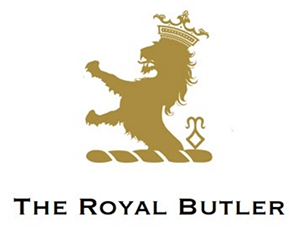The Lord Chamberlain v Grant Harrold- British Queen blocks Royal Butler trade mark
The Queen has won in an opposition preventing one of Prince Charles’ former butlers from registering the trade mark “The Royal Butler” for use in his etiquette training firm.
Mr Grant Harrold, who was previously employed by Prince Charles at his country estate as a butler, applied for a trade mark for the name “The Royal Butler” (as part of the mark shown below) for use in his etiquette training firm.

The Lord Chamberlain, acting on behalf of the Queen, filed an opposition to the application, stating that Mr Harrold had not been granted permission to use the name arguing that Mr Harrold should not be able to register the mark, without permission from the Queen. The opposition was filed inter alia under section 4(1)(d) of the Trade Marks Act 1994 which requires the consent of Her Majesty or another member of the Royal Family to any trade mark which is likely to lead people to think that the applicant has or recently has had Royal patronage or authorisation.
Mr Harrold argued that the words “royal” and “butler” are dictionary words and, therefore, are not owned by anyone. He also noted that he had, in fact, previously been employed, as a butler in the household of HRH Prince of Wales between 2005 and 2011. He further argued that he had previously been granted permission to use “The Royal Butler” at a private meeting with senior royal members. In relation to the emblem, Mr Harrold argued that the device in the mark was not a royal emblem or insignia.
The UKIPO noted that the public is well aware that the royal family employs butlers and places importance on the observance of correct etiquette. It held that the user of a mark featuring the words “The Royal Butler” in relation to butler/etiquette training would be assumed to be someone who holds or has recently held the office of the royal butler in the royal household, and that use of the mark would, therefore, indicate that the user had been given royal authorisation to use the mark. Turning to the evidence, the UKIPO concluded that Mr Harrold had not been given permission to use “The Royal Butler” as he claimed and for these reasons refused Mr Harrold’s application to register the trade mark.
The UKIPO ruled in the Queen’s favour, refusing the application in its entirety and ordering Mr Harrold pay £2,500 in costs to the Lord Chamberlain.
The case highlights the importance of seeking royal consent if you are interested in using a mark that is likely to lead people to think that the applicant has or recently has had royal patronage or authorisation.
Only recently there was controversy over the applications for “SUSSEX ROYAL” by the Duke and Duchess of Sussex, which were subsequently withdrawn.
The Lord Chamberlain’s office produces definitive guidelines on the use of the royal arms, royal devices, emblems and titles and of photographs, portraits, engravings, effigies and busts of members of the UK royal family.
The Lord Chamberlain’s office guidelines for use of royal arms
Read moreFull decision
Read more
